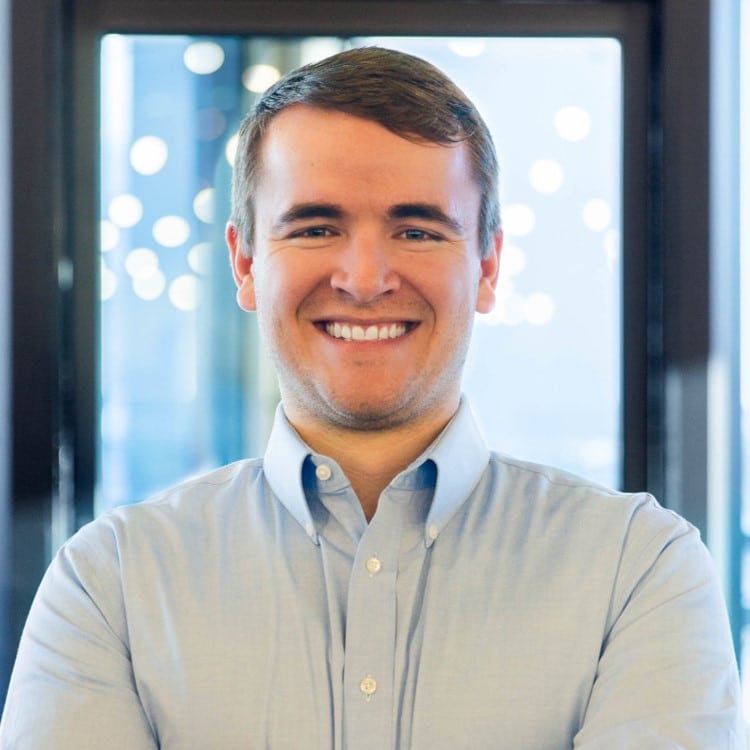My relationship with money has changed substantially over the last several years, as I’m sure it has for many other people. It takes a few years after a major life event to develop a comfortable and workable structure for managing personal finances. It would be easy to outline how someone should ideally manage personal finances, but it’s harder to build a system.
Now that I am several years into my career and marriage, I can share some of the things that have and have not worked for me and my wife, Kelsey. As a point of reference, I’m 30 years old, my wife is 27, we got married in 2012 and graduated from college in 2013. Since then, our personal finances have been completely combined and we live on one income.
What financial methods, philosophies, or best practices do we apply?
Plan and Set Goals: Perhaps the most valuable philosophy that we incorporate into our money management is to begin with the end in mind. In other words, we seek to identify and agree with where we want to be financially in the future and then we set short-term and long-term goals to get us there. Planning has helped us identify when we want to retire, what we want to do along the way, and how much we should save to get there. The goals that we set to help us along the way are not always tied specifically to finances, but many of them are. Setting goals and having a written plan has made communication about our finances much easier and it has produced demonstrable results. We also love knowing what we need to do next.
Set Guidelines: Since we know where we are heading, we were able to create a plan to get there. We don’t love for money to be a constant focus. We don’t want to have to worry about it all the time. So, we set up a few general guidelines to abide by. These have become our “best practices”. In some cases, our guidelines agree with industry best practices, but more importantly, our guidelines align with our individual personalities and our goals.
Save 15%: We save at least 15% of our gross income. At first, that 15% savings was split to build up a six-month emergency fund while still taking advantage of the company matches on 401(k) and HSA. After filling the emergency fund, it started going almost exclusively into retirement, which includes 401(k), IRA, and HSA. We split our retirement contributions evenly between Roth and Traditional whenever possible. We often end up saving closer to 20% since that percentage increases when we are saving for a specific short-term goal or when we have leftover money at the end of the month.
Give 10%: We give 10% of our net income no matter what. Our contributions go to our church with a little extra to some local non-profit organizations. We set this up to automatically come out of our primary bank accounts twice each month based on our projected earnings. Then at the end of the year, we do a “true up” to make sure it all adds up to a full 10%. We believe that choosing to give 10% has a two-fold benefit. First, it allows us to give back and help others in their times of need. Second, it helps us ensure that we are on top of and careful with our finances.
Manage Risk: We may not be risk-averse in all our aspects of our lives, but when it comes to personal finances, we have found peace of mind in proactively mitigating financial risk. This started with increasing our financial literacy so we knew what those risks might be. In those times, we turned to other experts to figure out where to start and what to do. This led to us building up an emergency fund to cover 6-months or more of expenses, getting a full estate plan, keeping plenty of life insurance, and making sure we are properly insured.
What are some of the other financial products or services that we use?
Being passionate about personal finances, I have tried and tested numerous products and services. Below are some of the ones that have stuck.
Ally Bank: This isn’t my primary bank, but I keep a large portion of my emergency fund there. They have very competitive interest rates on their savings accounts, they have a beautiful and user-friendly user experience, and I love their customer support.
Mint and Credit Karma: These are two valuable free resources for staying on top of our spending and credit. I don’t spend a lot of time on their platforms, but even half-hour per month helps us stay on track.
Wealthfront: I keep an IRA at Wealthfront. It was easy to open, easy to fund, and easy to invest. Eventually, I will roll my 401(k) balance into that IRA as well to manage it all together.
Ladder Life: This is not the only life insurance company that I use, but it is my favorite by far for a few reasons. First, it was super easy to set up. It took about 10 minutes from start to finish and I didn’t have to do a full medical exam. Second, Ladder Life has a unique feature to allow me to adjust my coverage over time as my needs change.
HealthEquity: I believe in the power and the future of Health Savings Accounts, especially when combined with other tools for retirement and healthcare planning. They are a market leader and have been conveniently integrated with each of my last 3 health insurance providers.
Robinhood, Acorns, and Coinbase: I do like to invest a bit in the markets outside of my retirement as well. I believe in passive management and index investing for the long-term, but I use these 3 for investing with a shorter time horizon. Robinhood makes investing in stocks more accessible and more profitable by providing free trading. I use Coinbase for managing and investing in cryptocurrencies. And Acorns provides a convenient platform to save and invest a bit extra on the side.
Voyant Legal: This is a Utah based law firm that created my comprehensive estate plan. The managing partner of the firm has also created another venture called Make It Official to provide some estate planning documents like Guardianship Nominations online to the digital generations.
What can we do better with our personal finances?
There are plenty of opportunities for improvement for everyone when it comes to personal finances. There are just too many things to stay on top of every month. We found early in our marriage that how we each choose to spend money was too often a source of conflict. Because of this, we do not set a traditional monthly budget. I wholeheartedly believe that we would be able to spend less and save more if we budgeted every month, but instead we set and abide by the guidelines to save 15%, give 10%, cover the baseline bills, and then we can spend the difference in our discretion.
We have, however, incorporated a check and balance into this system. Instead of creating a full budget for every month, we review and discuss all our spending transactions every couple of months for the purposes of being aware. This is our check. We almost always find a surprise or two that we can then work on improving. The balance, however, is that either of us can call for a temporary transition to the envelope system of cash management if spending gets out of hand. We have done so about 3 times in the last 5 years, for an average of 2-3 months at a time. It can be unpleasant, but it is very helpful. It helps us be more proactively aware of our spending to prevent this, and if it does come to fruition then it does help us reign back in spending, especially spending that would happen online.
Overall, this also tells me that there is also room to improve our communication. The more that we are able to openly talk about our finances, the better off we are. I am, however, grateful that we started early in our planning and goal setting. It helps open our lines of communication, it serves as a solid baseline and point of reference for the times that we do talk, and it helps us stay on track for a prosperous future.






